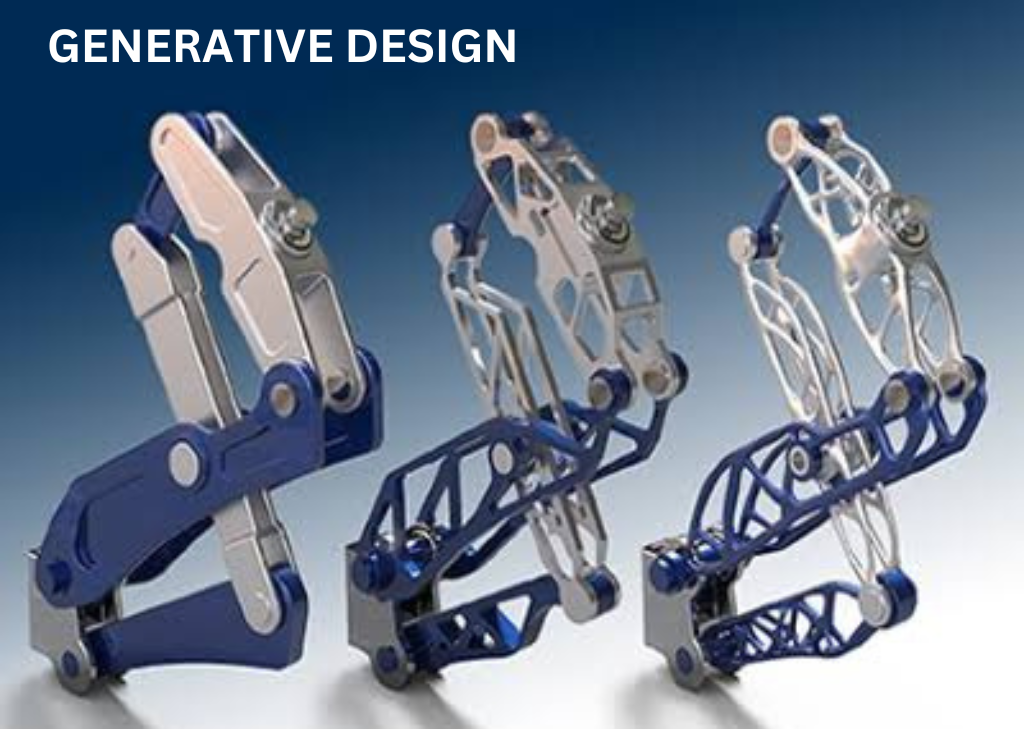Generative Design is a design approach that involves using algorithms and computer programs to automatically generate and explore many possible solutions to a given design problem. It is a fast and efficient way to explore design options and can help designers quickly identify the best solutions for a given problem.
The process of generative design involves defining the design problem and in putting constraints and parameters into a computer program. The program then generates a large number of design options that meet the given constraints and parameters. These designs are evaluated based on various criteria, such as performance, cost, and manufacturability. The designer can then select the best options and refine them further.
Generative design is particularly useful for complex design problems that involve many variables and constraints, such as designing airplane wings or optimizing building structures.
Generative Design is a design methodology that leverages computer algorithms to explore and generate numerous design solutions for a given problem. It involves inputting specific design parameters and constraints into a computer program, which then produces a range of possible design options that meet the given criteria.
Generative Design in Creo further Reliable?
The nearly combined Topology Optimization tools have been available for several performances in Creo. There isn’t any secret that generative design and the nearly combined Topology Optimization tools have been available for several performances in Creo. Four aspects,whether you still, mean that a workflow with generative design can be more reliable than traditional CAD workflows.
- You ’re structure conditions into the design- All over products start with conditions. These conditions could be driven by system engineering models tied into the product’s conditions and managed in (Product Lifecycle Management) PLM, as is possible in Creo or you can use conditions you ’ve validated yourself in the course of earlier design work. The point is that with generative design, applying conditions to your model is part of setting up your study. Again, every result that study returns will meet those conditions.
- The manufacturing system informs the design- Generally you design your part, validate it using simulation and analysis tools, presumably do more design work, and also turn the part over to the process architect for the first of several rounds of feedback before the design is perfected. Using generative design saves time because it adds manufacturing criteria to your study. This ensures you ’ve gotten the design off to the swish possible launch before you call in your colleague’s precious, specialized moxie.
These include :-- A figure direction for the corridor that will be 3D published.
- A parting line for the corridor that will be cast or putrefied.
- A direct extrude for corridors that will be extruded or machined.
- You induce multiple generalities snappily – Suppose back to how you handle the original design phase. Maybe a sprinkle of generalities? If you ’re like utmost professionals, you ’re also going to go back to what your hard- won experience shows you is likely to work. With generative design, the software iterates far faster than humans can- and without bias. Now your professional judgment goes into setting up that well- conceived study.
- You can modify the performing model in the Creo design terrain- The part model that generative design creates produces a B- rep ( boundary representation) figure. Work on it in Creo just as you would any of your models.
The Generative Design Workflow
- Define load cases – These represent the operating surroundings that your model must survive.
- Specify design pretensions – This could be a target safety factor or a minimal abecedarian frequency.
- Add constraints – These include the manufacturing constraints as well as figure constraints like harmony and factors to produce thinner or thicker regions and reduce webs
- Select materials – Creo presently allows up to 10 material per design criterion, and a study can contain numerous design criteria.
- Run the optimization on the desktop before pushing an array of studies to the cloud. Apply the study settings to control the time & resources used.
- View the results.
- Select the design(s) you want and keep working in Creo.
Here we can say that no software can guarantee innovation, but generative design is a proven approach that can help you bring better products to market faster and at less cost.

